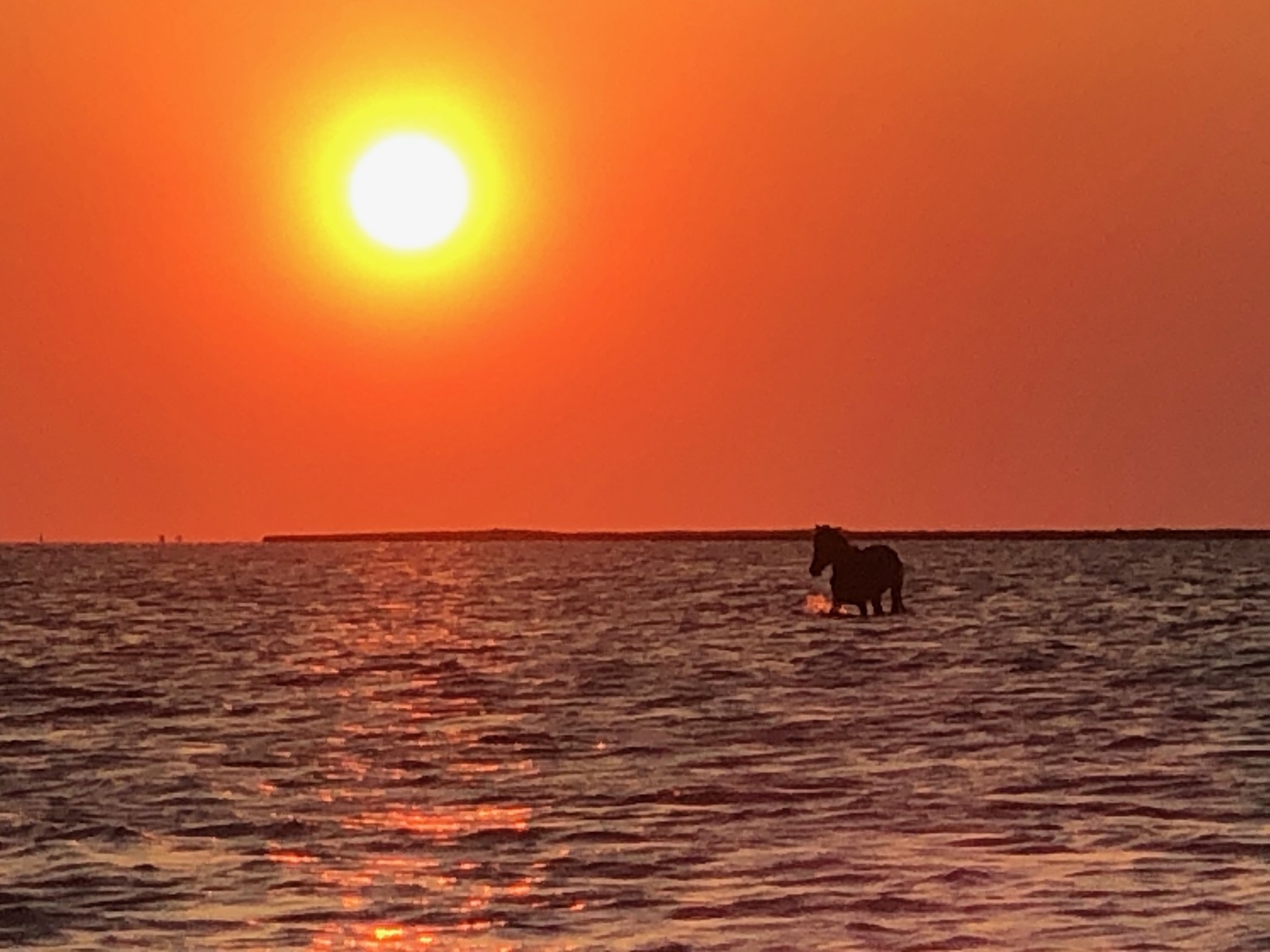The romantic legend says a Spanish ship wrecked offshore of the Outer Banks and the horses swam to shore. We know many things about our banker ponies. What we don't know for sure is when or how they exactly arrived on our shores. One study investigates the native Americans appropriating horses from an ill-fated Spanish settlement near present day Wilmington. NC. Then bringing those horses to the surrounding islands. DNA analysis shows the local banker ponies are Colonial Spanish Mustang. One way or another they arrived here from the Iberian Peninsula of Spain.
The horses are considered wild animals. It's much of a hands off approach to management. Birth control is administered to the mares of the population. More so to manage the bloodlines of the herd. We've identified mothers and grand mothers. We track their identities and health. Many horses with no distinct markings carry freeze brands on their left hind quarter. The horses uses the needle rush plants to groom their mane and tail. Some use the live oyster reefs at low tide to trim their hoofs. Their primary food source is Sea Oats. In the Spring they enjoy the Smooth Cordgrass. Fresh water is primarily obtained from ground water wells around the island.
In 1998 the U. S. Senate passed the Shackleford Banks Wild Horse Protection Act. And in 2010 the Colonial Spanish Mustang of the Outer Banks is named the Official Horse of the State of North Carolina. The herd is co-managed by the Foundation for Shackleford Horses, Inc. and the National Park Service.

